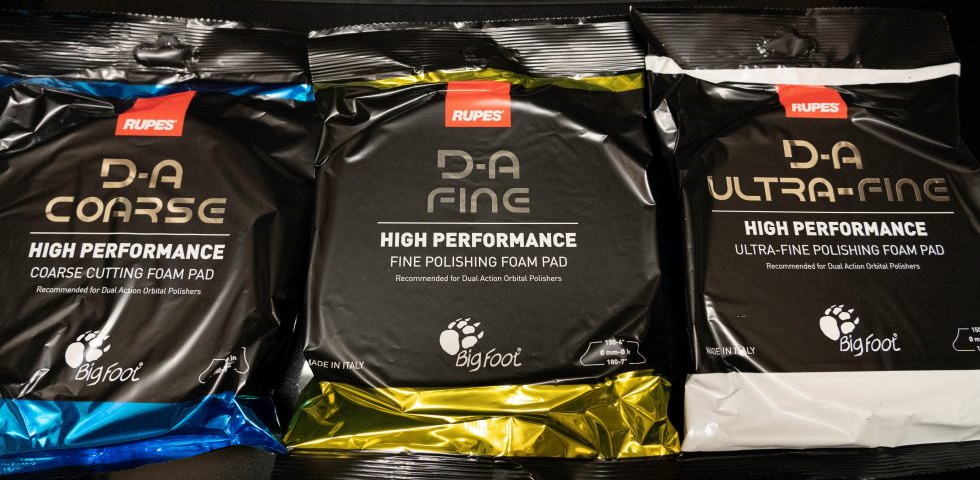We recently received the new Rupes D-A system to test out, this was all done on our personal vehicle, a Toyota Prius C, as we are extremely familiar with the paint and how it reacts so we can isolate that variable for a more streamlined analysis. Here is the starting paint condition.
Now I know what you are thinking; Is the system color coded? Is it effective? Do I read it as DA System in my mind every time, even though I know it stands for Dual Action? The answer to all of these is yes, and not only is it effective it is actually very easy to use.
As you can see, both the packaging of the pad and the bottle are black with the corresponding color. Not only that but the tip is also color coded, so it is easy to find when looking inside your bag, and of course the pad itself matches as well! I love color coding more than I should.
So, let’s start with the most aggressive, the D-A Course. This can be your standard go-to compounding product in a 2-step system. Super low dusting and a low enough viscosity that it can easily spread and has a good cycle time so it’s not drying out and gumming up on you. It does leave some hazing, but this is expected on black, relatively soft paint. Has a tiny bit of bite when removing but not bad at all.
See below for image after compounding, you can see the slight haze around the edges of the light.
Net up was the D-A Fine, which applies very easily and removes just as easy. No dusting at all and, again, has a long working time. Finished down VERY well and could easily be your finishing polish for most applications.
See below for image after polishing and the haze is gone.
Lastly, we used the UNO Pure, which is for either very soft paints, or for that extra step to get the last 5% of gloss out of the paint. Very easy to work with and remove and make quick work of removing any residual haze. It wouldn’t be used in all applications but very good to have in your arsenal for those finicky paints *cough*tesla*cough*.
Then the finish has an amazing depth
The pads themselves are also awesome. Rupes always has had some of the best-balanced pads, and these are no different. They are thinner than the standard Rupes pads and have the same outward bevel cut, but also have a round lip that helps with pad stability on the surface. They come in 3 different size; 6″, 5″ and 3″.
Here you can see the pad shape and contour
The pads are definitely not firm and the yellow and white feel about the same as the current Rupes pads of the same color, maybe a tad firmer.
Overall, this is a great system that I would be happy to use moving forward. The color-coding, I love and makes it easy to learn for either new detailers or teaching employees the new method. Just keep in mind, compounds/polishes have a ton of more variances in seeing their results. So if you are looking to test these out, be sure to have time to dedicate to test them in multiple scenarios and get familiar with them so you can test how it works, rather than only comparing it to the familiarity of your current setup.
